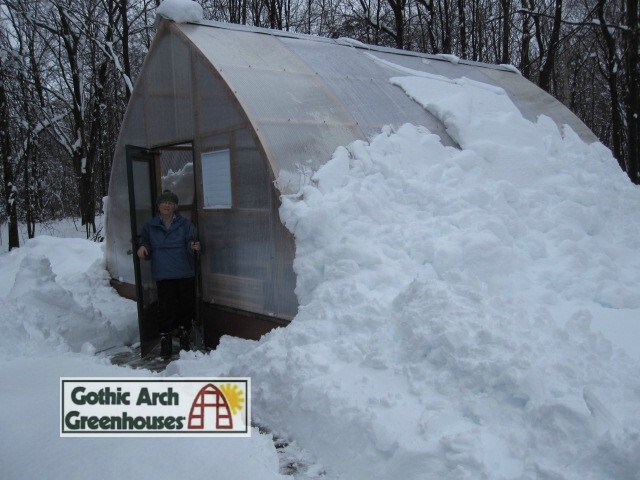
Designing a greenhouse that suits your climate is crucial for creating an optimal growing environment for your plants. Whether you live in a hot and arid region or a cold and snowy area, understanding the specific considerations for your climate is essential. In this blog post, we will guide you through the process of designing greenhouses that are tailored to your climate, providing the best conditions for successful plant growth.
Assessing Climate Conditions: Begin by thoroughly assessing the climate conditions specific to your location. Consider factors such as temperature ranges, humidity levels, sunlight exposure, prevailing winds, and any seasonal variations. This information will serve as the foundation for making informed design decisions.
Choosing the Right Greenhouse Structure: Select a greenhouse structure that suits your climate. Options include traditional glass structures, polycarbonate panels, or high tunnel-style structures. Each has its advantages and considerations regarding insulation, light transmission, and durability. Consider the pros and cons of each option and choose the one that best fits your climate needs.
Insulation and Thermal Efficiency: Insulate your greenhouse properly to maintain stable temperatures throughout the year. This includes using materials with good thermal properties, such as double-layered glazing or insulated panels. Incorporate features like shade cloth, thermal curtains, or insulating blinds to regulate heat during hot summers or retain warmth in colder months.
Ventilation and Air Circulation: Ensure adequate ventilation and air circulation to regulate temperature and humidity levels. Install roof vents, side vents, or automated ventilation systems to allow for proper airflow. Consider the prevailing winds in your area and design the greenhouse layout to optimize natural ventilation. Fans or circulation fans can further enhance air movement within the greenhouse.
Shading and Sunlight Management: Implement shading systems to protect plants from excessive sunlight and heat. This could include installing shade cloths, movable shading panels, or automated shading systems. Additionally, consider the orientation and placement of the greenhouse to optimize sunlight exposure and minimize shadows.
Water Management: Design your greenhouse to accommodate the water needs of your specific climate. Incorporate rainwater collection systems, gutters, and proper drainage to capture and utilize water efficiently. Install irrigation systems with programmable timers to deliver water in precise amounts at appropriate intervals.
Climate Control Systems: For extreme climates, consider installing climate control systems, such as heaters, evaporative cooling systems, or humidifiers. These systems can help regulate temperature and humidity levels, providing optimal growing conditions for your plants.
Monitoring and Automation: Implement monitoring systems to track temperature, humidity, and other environmental factors within the greenhouse. Automated systems can help adjust climate control parameters based on preset conditions, ensuring optimal growing conditions without constant manual intervention.
Greenhouse design is definitely not one-size-fits-all. Areas with low sunlight and heavy snowfall require different structures than a tropical climate marked by extreme heat and high humidity. We will help narrow down the best greenhouses for your climate.
By understanding their local climate, gardeners and commercial growers of any size can make fundamental decisions about their greenhouse setup. Doing so will allow their plants to thrive and also extend their growing season.
Because a greenhouse provides protection from external elements, determining how the weather and climate in your area affects your plants is essential. Ultimately, the design of the structure is influenced by whether it is shielding them from wind, rain, heat, snow, etc.
Whether you’re considering a new structure or want to optimize an existing one, these design suggestions—based on the four major climate types—will help you maximize production year after year.
Greenhouses for Dry Tropical or Desert Climates
For climates marked by extremely high temperatures, low humidity and high winds, a minimalist structure works best. A simple shade structure using insect screen as sidewall protection is the most practical option to manage costs. A misting or fogging system can help increase humidity inside the greenhouse, while also helping to reduce temperatures well below the arid conditions outside. It can upgrade this economical design to include automated cooling systems for even more control over the greenhouse climate.
Greenhouses for Humid Subtropical Climates
Hot, muggy conditions day and night, coupled with heavy rains, require flexible greenhouse designs, as simple as a plastic roof with roll-up sides covered with insect mesh for protection against pests or a more substantial greenhouse that can withstand higher winds and scorching sunny days. Even larger greenhouses may feature open-roof construction to allow for natural ventilation. Heating systems and insulation aren’t much of a concern in this climate, but misting systems, circulation fans and movable screens can help manage temperature, air flow and light intensity.
Greenhouses for Temperate Climates
Temperate climates exhibit seasonal variations in temperature and moderate rainfall year round. An optimal greenhouse design features fully clad walls, roof and sides with large areas to encourage ventilation. A double layer of insulation can significantly reduce heating expenses. Commercial growers in these conditions may find it most efficient to manage heating, ventilation, irrigation and lighting with environmental controls. These controls help easily maintain optimal greenhouse conditions despite the changing weather.
Greenhouses for Cold Temperate Climates
In cold, snowy climates, greenhouses should be sturdy enough to handle heavy snow. Polycarbonate walls and a steep roof pitch will help prevent snow from collecting on top of the greenhouse. Adding supplemental lighting and keeping vents closed will help keep the greenhouse warmer, particularly during colder months.
The experts at Gothic Arch Greenhouses will help you choose the right greenhouse for your climate. Please call us at 1-800-531-4769 or visit www.GothicArchGreenhouses.com to view our selection of greenhouses.
